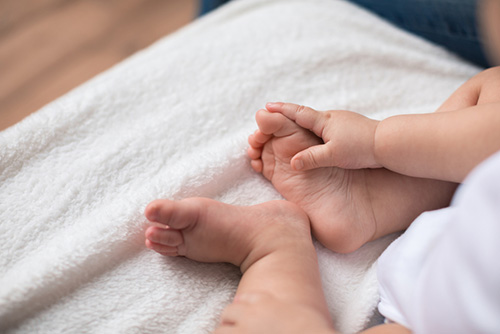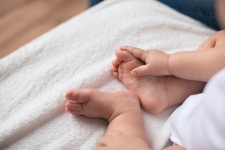This Little Piggy Went to Market…This Little Piggy Had Flat Feet?!
What happens when – after those first precious steps are taken – you begin to notice that maybe something isn’t quite right with the way your little one is walking, stepping, or standing…what then?

Honestly, these are concerns we hear all the time. Lots and LOTS of children have flat feet, take up toe walking, are pigeon toed, are a bit bowlegged, or have knock knees. Now, sometimes, kids will simply grow out of these types of things without any treatment or intervention whatsoever. And, sometimes they don’t. With all of that said, there are two things we want you to know right off the bat:
- There are lots of orthopaedic “conditions” that are nothing more than normal variations in our anatomy and don’t need treatment.
- For those conditions that do need to be monitored and/or treated, this is where “well-child” checks come into play. Regular check-ups with the pediatrician are a GREAT way for any issue(s) and/or concern(s) to be addressed.
So, what are some of the most common “kid related” foot issues? Well, we mentioned them earlier – flat feet; pigeon toe; knock knees; toe walking; and, bowlegs. Some of these are probably at least a bit familiar to you, others maybe not so much. Let’s take a few minutes to review each of them a bit more in-depth – today we’ll look at flat feet.
Flat feet and children tend to go hand-in-hand. Seriously. The majority of infants are actually born with flat feet and don’t begin to develop arches until a bit later on. Flat feet don’t tend to be noticed by parents until their little ones begin to walk and, even then, it’s often viewed as an ankle issue (because of the way the ankles “turn in” when the child is bearing weight). However, flat feet aren’t typically a cause for concern and, typically, flat feet are only treated if the condition is causing pain (be it in the foot, ankle, knee, hip, or back).
Now, as children get older and begin to participate in athletics, foot pain may become a problem – if this is the case, your orthopaedic surgeon may recommend arch supports be worn. Aside from that, no other treatment is typically needed for flat feet.
In part 2 of this series we’ll take a look at toe walking and in-toeing (aka, pigeon toes); and part 3 will dive into bowleggedness, and knock knees. In the meantime (or anytime!), if you’re concerned about the foot, ankle, and/or leg development of your child, please don’t hesitate to give us a call and set up an appointment with our very own foot and ankle specialist, Dr. Krejci!

